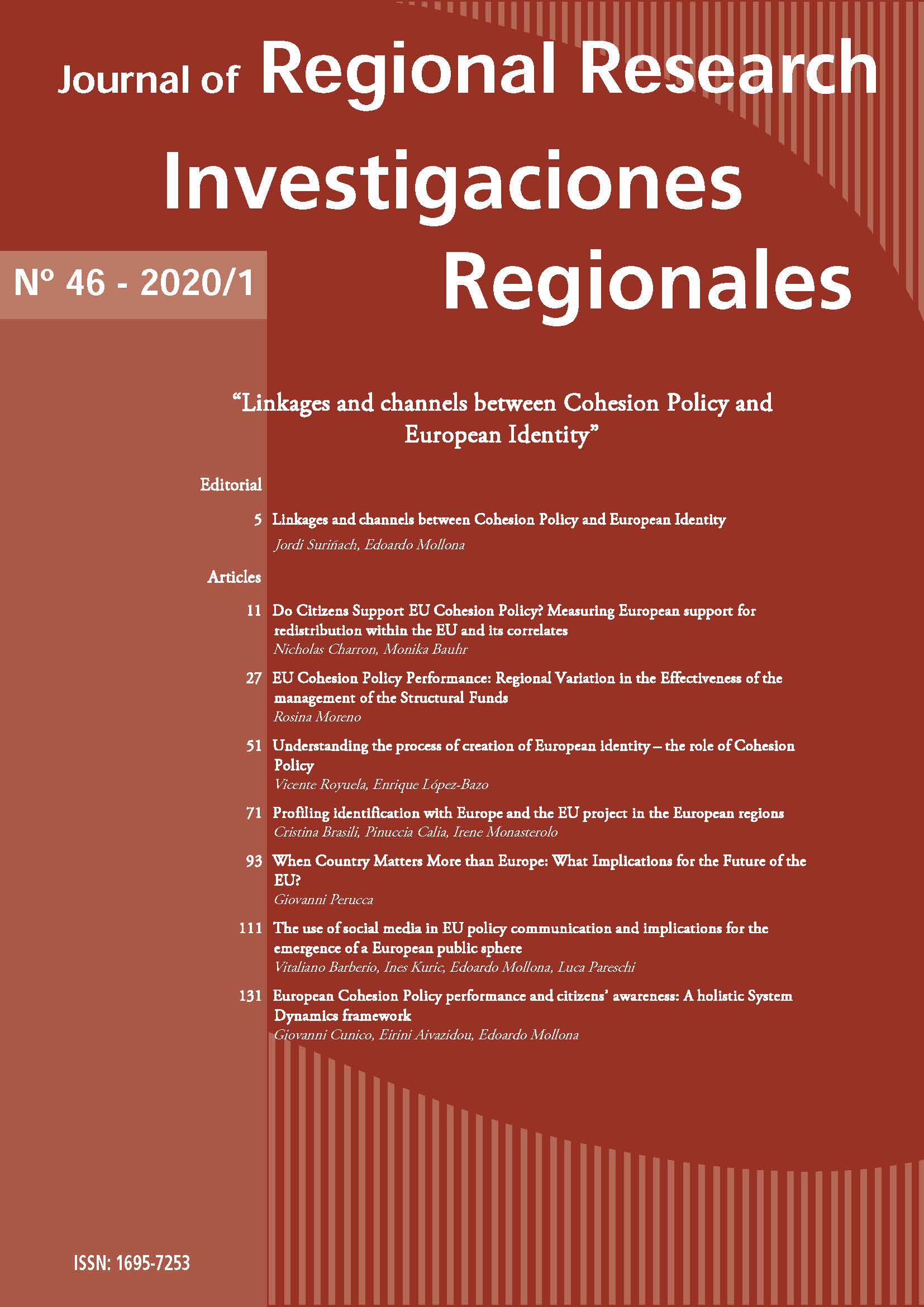The use of social media in EU policy communication and implications for the emergence of a European public sphere
DOI:
https://doi.org/10.38191/iirr-jorr.20.006Keywords:
Cohesion policy, European Public Sphere, Topic Modeling, Social Media, EuroscepticismAbstract
Cohesion Policy accounts for the European Union main investment budget and seeks to strengthen economic, social and territorial cohesion. While accomplishments in this field are constantly measured, European citizens are not always aware of policy’s impact and of the role the EU plays therein. This issue is relevant, as communication of social policy is central to the emergence of the European public sphere, an acknowledged condition to foster European integration.
In this work we aim at advancing research on the European public sphere through an analysis of the social media communication of EU cohesion policy by ten LMAs. We build on a bottom-up construction of shared meaning structures through semi-automatic techniques of analysis and highlight three main results: first, ‘horizontal Europeanization’ takes place on social media; second, Europeanization occurs both as the spontaneous integration of shared discontent expressed by citizens, and by the institutionalization of top-down procedures of communication adopted by LMAs; Third, a cluster of topics articulated internationally and conveying a negative attitude towards the EU funding scheme suggests that, counter-intuitively, Euroskepticism seems to facilitate the building of a European public sphere.
Downloads
Additional Files
Published
Issue
Section
License
Aquellos autores/as que tengan publicaciones con esta revista, aceptan los términos siguientes:
En el momento de aceptar la publicación de sus artículos en Investigaciones Regionales / Journal of Regional Research, los autores acceden a utilizar la licencia Creative Commons CC BY-NC. IIRR/JRR es una revista abierta que permite a los autores retener el máximo control sobre su trabajo. Los autores aceptarán utilizar la licencia Creative Commons Attribution-NonCommercial. Esta licencia permite a cualquier persona copiar y distribuir el artículo con propósitos no comerciales, siempre y cuando se atribuya adecuadamente la atribución del trabajo a la revista y a los autores.

